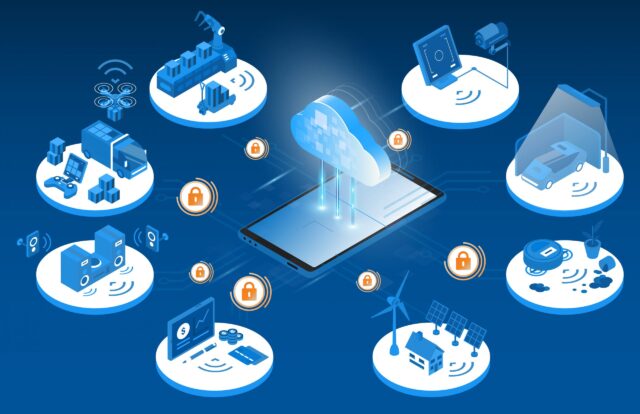The Internet of Things (IoT) refers to the network of interconnected smart devices that can communicate and improve our daily lives in diverse ways. IoT devices enable greater efficiency and control over daily operations, from smart homes to smart cities. However, this ecosystem’s sheer volume of connected devices poses a significant security challenge, especially in the cloud. IoT cloud security has become a critical concern for individuals and businesses alike. Due to the proliferation of IoT devices, ensuring that their data transmission and storage are secure from cyber threats is essential. In this blog post, we’ll take a closer look at IoT cloud security, its associated risks, and the best practices you can adopt to safeguard your devices and data.
Table of Contents
What Is Cloud Computing in IoT?
Cloud computing for IoT enables access to computing resources on-demand over the internet. This allows IoT devices to offload their computing tasks to the cloud. This technology can enhance device management, reduce cost, and improve efficiency. Cloud computing for IoT, however, requires additional security measures to ensure that data and access to devices are not compromised.
Risks Associated with IoT Cloud Security
In the evolving landscape of the Internet of Things (IoT), IoT cloud security emerges as a pivotal concern, primarily due to the interconnected nature of devices and the massive data they handle. IoT devices, ranging from smart home appliances to sophisticated industrial tools, rely heavily on cloud computing for data storage and processing. While enabling enhanced functionality and efficiency, this dependency inherently introduces plenty of security risks. These risks threaten the confidentiality and integrity of data and pose significant challenges to user privacy and system reliability.
Data Breaches
The most prominent risk in IoT cloud security is data breaches. As IoT devices continuously transmit sensitive data to the cloud, they become lucrative targets for cybercriminals. These breaches can lead to the exposure of personal information, intellectual property, and critical business data.
Insecure Interfaces and APIs
IoT devices often interact with the cloud through APIs and interfaces that, if not securely designed, can become gateways for unauthorized access and data manipulation. Inadequately protected interfaces can expose sensitive data to cyber attackers who exploit weak authentication and authorization protocols, leading to security breaches within the network.
Lack of Encryption
Insufficient encryption or lack of end-to-end data transmission and storage encryption can leave data vulnerable to interception and misuse. Without robust encryption, sensitive information such as personal data, proprietary business information, and critical infrastructure details are at risk of being intercepted by malicious actors.
Device Hijacking
IoT devices with inadequate security can be hijacked and used as entry points into broader network systems, leading to widespread security incidents. Once a device is compromised, attackers can install malicious software, turning the device into a tool for launching further attacks, such as distributed denial of service (DDoS) attacks.
Best Practices for IoT Cloud Security
With technological advancement comes the increased risk of security breaches. IoT cloud security is paramount in protecting sensitive data transmitted and stored by these devices. Several IoT cloud security best practices exist to ensure the secure transmission of data and the protection of connected devices. These key practices include:
Encrypting data
IoT devices store and transmit sensitive user data, including credit card information, location data, and personal health data. Encryption of this data ensures that even if a third party gains unauthorized access, the data remains unreadable.
Implementing multi-factor authentication
MFA requires users to provide multiple verification forms before granting access to sensitive data. This could include a combination of passwords, biometric verification, and security tokens. By implementing multi-factor authentication, the likelihood of unauthorized access is significantly reduced. It ensures that only verified and authorized personnel can interact with the IoT device or access its stored data, providing an additional layer of security against potential breaches.
Regular software and firmware updates
The software and firmware that operate IoT devices are not infallible; they are often susceptible to vulnerabilities that cyber attackers can exploit. Regularly updating this software and firmware is a critical defensive strategy. These updates often contain patches for discovered security loopholes, significantly diminishing the risk of a successful cyber attack.
Summing Up
As IoT devices continue to become an integral part of our daily lives, there is an urgent need for adequate IoT cloud security measures. This blog post has highlighted some security measures and standards in place to ensure that connected devices are secure. By implementing proper security measures and standards, we can ensure that the potential of IoT devices is maximized while minimizing security risks. Businesses, institutions, and individuals must prioritize IoT cloud security to safeguard the privacy and security of their information.








